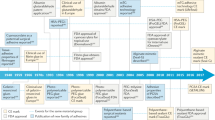Abstract
The mechanism of laser bonding is not yet understood, but it is considered to be a thermal rather than a photochemical effect. The conditions required for successful anastomosis remain a controversial topic.
In an alternative approach, in vitro tissue bonds were created over the temperature range 20–90°C without the use of a laser by approximating the tissue in a temperature controlled clamp. Bond integrity was assessed by measurement of breaking strength, and the effect of temperature and hydration on bond strength was examined.
Bonds created under conditions of dehydration were significantly stronger than their hydrated counterparts. Temperature dependence was also observed, and bond strength significantly increased when temperatures exceeded the tissue denaturation temperature.
As a result of these findings, a possible bonding mechanism is proposed.
Similar content being viewed by others
References
Jain KK, Gorisch W. Repair of small blood vessels with the neodymium-YAG laser: a preliminary report.Surgery 1979,85:684–8
Gomes OM, Macruz R, Armelin E et al. Vascular anastomosis by argon laser beam.Texas Heart Inst J 1983,10:145–9
Nakata S, Campbell CD, Pick R, Replogle RL. End-to-side and end-to-end vascular anastomoses with a carbon dioxide laser.J Thorac Cardiovasc Surg 1989,98:57–62
Ninomiya J, Shoji T, Tanaka S et al. Laser vascular welding in biologic grafts.Trans Am Soc Artif Intern Org 1989,35:208–11
Flemming AFS, Bown SG, Colles MJ, Brough MD. Comparison of laser-assisted and conventionally sutured microvascular anastomoses by bursting pressure: a reanalysis and further studies.Microsurgery 1990,11:25–33
Pribil S, Powers SK. Carotid artery end-to-end anastomosis in the rat using the argon laser.J Neurosurg 1985,63:771–5
Sigel B, Acevedo FJ. Electrocoaptive union of blood vessels: a preliminary experimental study.J Surg Res 1963,3:90–6
Sigel B, Dunn MR. The mechanism of blood vessel closure by high frequency electrocoagulation.Surg Gynecol Obstet 1965,121:823–31
Kopchok G, Grundfest WS, White RA et al. Argon laser vascular welding: the thermal component.Proc Soc Photooptica Instr Eng 1986,712:260–3
Kopchok G, White RA, Grundfest WS et al. Thermal studies of in-vivo vascular tissue fusion by argon laser.J Invest Surg 1988,1:5–12
Lennox FG. Shrinkage of collagen.Biochemica et Biophysica Acta 1949,3:170–87
Gorisch W, Boergen KP. Heat-induced contraction of blood vessels.Lasers Surg Med 1982,2:1–13
Schober R, Ulrich F, Sander T et al. Laser-induced alteration of collagen substructure allows microsurgical tissue welding.Science 1986,232:1421–2
White RA, Kopchok G, Peng S et al. Laser vascular welding—how does it work?Ann Vasc Surg 1987,1:461–4
Spears JR, James LM, Leonard BM et al. Plaque-media rewelding with reversible tissue optical property changes during receptive cw Nd:YAG laser exposure.Lasers Surg Med 1988,8:477–85
Jenkins RD, Sinclair IN, Anand R et al. Laser balloon angioplasty: effect of tissue temperature on weld strength of human postmortem intima-media separations.Laser Surg Med 1988,8:30–9
Frushour BG, Koenig JL. Raman scattering of collagen, gelatin, and elastin.Biopolymers 1975,14:379–91
Shinyashiki N, Asaka N, Mashimo S et al. Microwave dielectric study on hydration of moist collagen.Biopolymers 1990,29:1185–91
Author information
Authors and Affiliations
Rights and permissions
About this article
Cite this article
Fenner, J., Martin, W., Moseley, H. et al. Shear strength of tissue bonds as a function of bonding temperature: a proposed mechanism for laser-assisted tissue welding. Laser Med Sci 7, 39–43 (1992). https://doi.org/10.1007/BF02594047
Received:
Issue Date:
DOI: https://doi.org/10.1007/BF02594047




